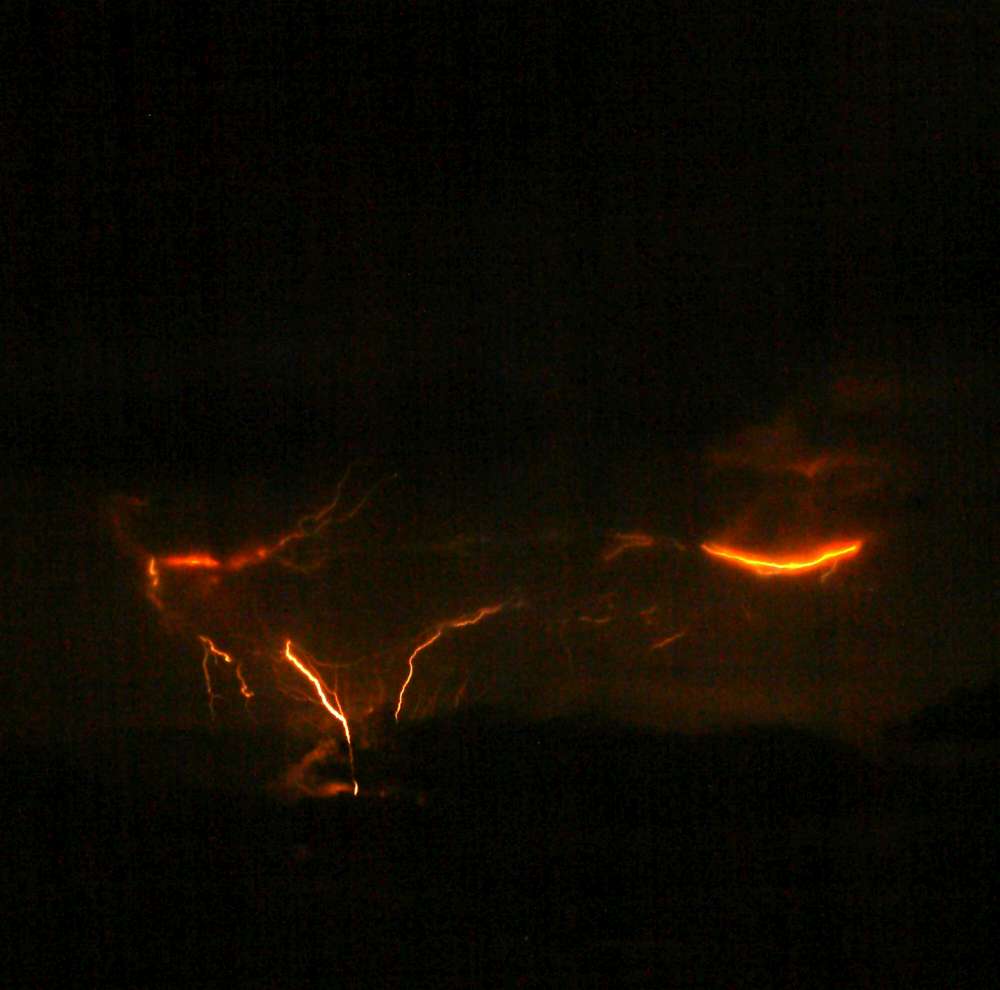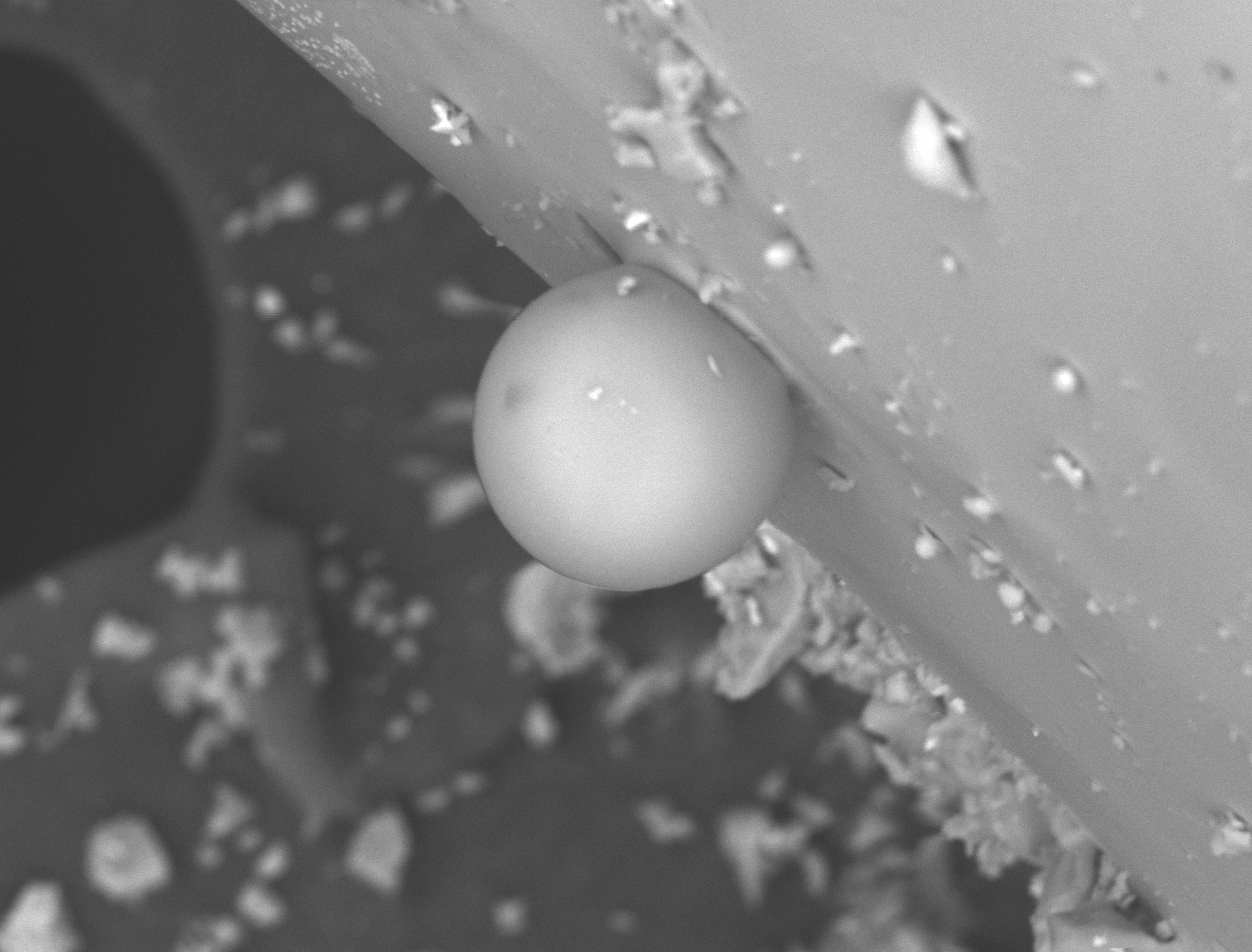Forged in a Flash: Volcanic Lightning Forms Glass Balls

Inside towering clouds of volcanic ash, stunning lightning storms can create tiny crystal balls, a new study reports.
Researchers recently discovered smooth glass spheres in ash from explosive volcanic eruptions. Kimberly Genareau, a volcanologist at the University of Alabama, first spotted the orbs while scanning ash from Alaska's 2009 Mount Redoubt eruption with a powerful microscope. She also found them in ash from Iceland's 2010 Eyjafjallajökull eruption.
Both volcanoes blasted out billowing ash clouds that triggered spectacular displays of volcanic lightning. Inside these murky clouds, ash particles rub together, generating static electricity that discharges as lightning. [Big Blasts: History's 10 Most Destructive Volcanoes]
Genareau and her colleagues said they think the lightning displays forged the glass balls from particles of volcanic glass. Their findings were published Feb. 27 in the journal Geology.
Volcanoes spit out jagged glass shards during eruptions, along with sharp scraps of rocks and minerals. But lightning within the ash cloud can heat the air to 54,000 degrees Fahrenheit (30,000 degrees Celsius) for a few millionths of a second, melting the glass particles. These molten droplets then form into balls as they fall through the air, Genareau said.
Researchers previously knew that volcanic eruptions could produce glass, but the new findings show how that glass can be made into spheres.
"You don't need volcanic lightning to make glass [in ash], just to get that unusual shape," Genareau told Live Science.
Sign up for the Live Science daily newsletter now
Get the world’s most fascinating discoveries delivered straight to your inbox.

The round spherules from Mount Redoubt and Eyjafjallajökull are only 50 microns across (1/25,000th of an inch), hundreds of times smaller than the spherules that can be ejected during meteorite impacts. Fountaining lava caught by the wind can also form such glass spherules, called Pele's tears.
Some of the glass spherules examined in the study were as smooth as crystal balls, but others were hazed by cracks and pits that may have formed when water expanded into steam as the glass melted.
The research team is planning further studies into how and why the spherules formed. For instance, the scientists verified that a violent shock can produce glass spheres in ash when they found a version of the tiny balls in ash left over from experiments by researchers at the University of Canterbury in New Zealand. In the experiments, the Canterbury researchers, who are also co-authors on the new findings, zapped artificial ash to investigate how volcanic ash disrupts high-voltage insulators. Their tests were similar to lightning discharges inside an ash cloud, Genareau said.
Now, after studying samples from several eruptions, the researchers suspect that it is the size of the ash particles that determines whether the glass spheres appear after volcanic lightning strikes, Genareau said. All the spherules found so far are about 50 microns or smaller in size, she said. Larger ash fragments were partially melted, but didn't completely transform into spherical shapes.
Genareau said she hopes that the new discovery will spark a search for similar spheres in older ash deposits, which could provide new clues about where and when volcanic lightning strikes.
"Not much is known about how often volcanic lightning occurs, and this provides physical evidence that may be preserved in the geologic record," she said.
Follow Becky Oskin @beckyoskin. Follow Live Science @livescience, Facebook & Google+. Originally published on Live Science.










